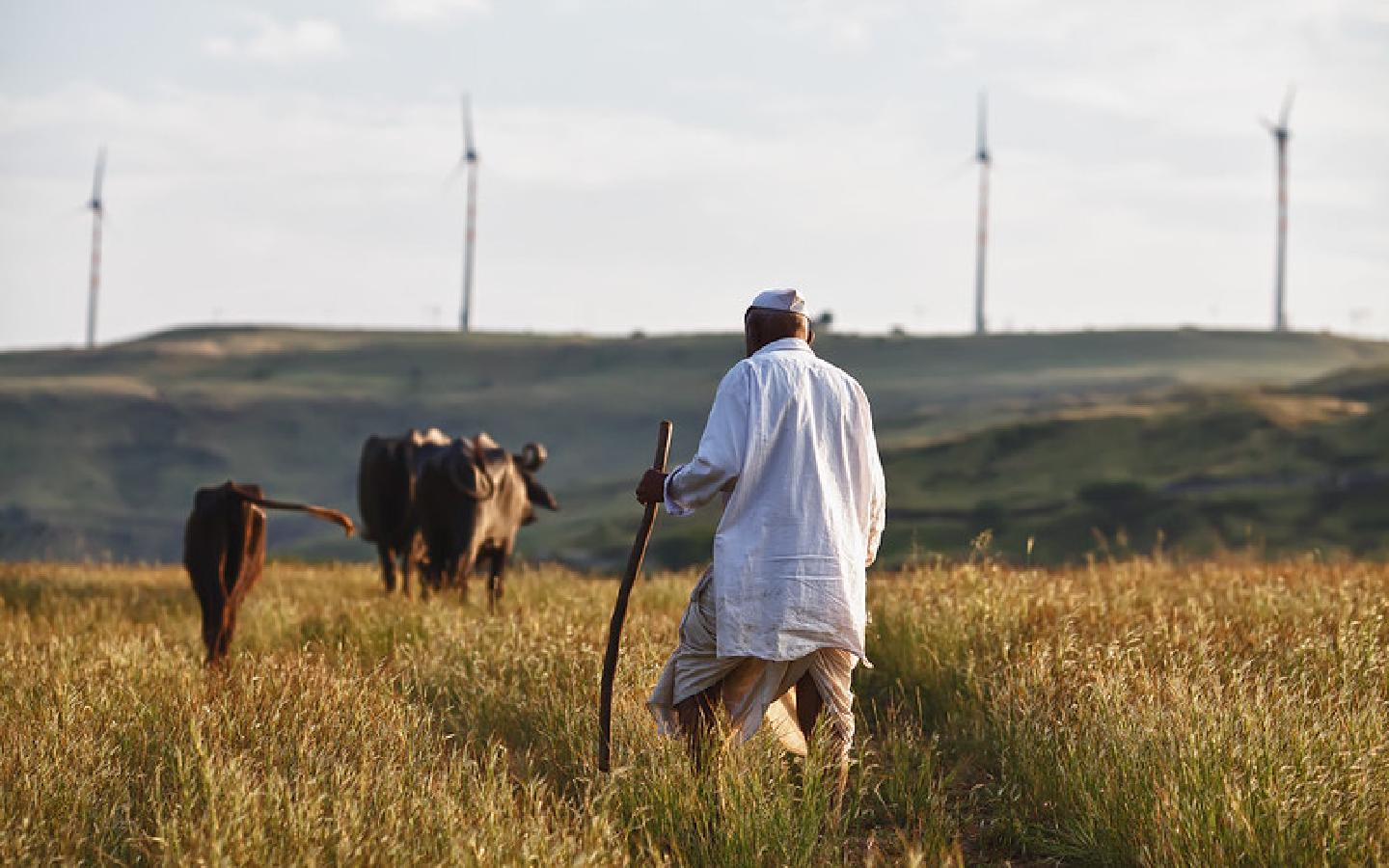Energy efficiency will help India reduce its annual carbon dioxide emissions. But India’s path to efficiency needs focused public sector energy services and increased acceptance by stakeholders. With financing support from the Clean Technology Fund and Global Environment Facility, ADB approved a project with Energy Efficiency Services Limited, a public sector energy service company in India, to expand energy efficiency investments in the country.
Carbon Emissions and Economic Growth
India has seen strong economic expansion over the past decades, enjoying a 7.2% growth in gross domestic product in 2022 (World Bank). However, with this growth came increased emissions, which climbed from 890,000 tons in 2000 to 2.2 billion tons in 2020.
The country is still largely dependent on fossil fuels, particularly coal power. To mitigate the effects of coal, improve environmental and health outcomes, and meet its international commitments to reduce its emission intensity by a third from 2005 levels, India is making a strong push toward renewable energy and energy efficiency.
While cleaner energy can help India cut emissions, so can reducing energy use from the outset with increased efficiency. India’s renewable energy push has been complemented by government policies, including the Energy Conservation Act (2022), which formalized the government’s strategy to increase energy efficiency and optimize energy demand without jeopardizing growth. India’s energy efficiency potential remains largely untapped, with possible annual energy savings equivalent to about 17% of the country’s total power generated in 2019.
To meet its pledge of reducing emission intensity by 2030, India must address several barriers. One such barrier lies on the regulatory side, where most distribution utilities continue to subsidize retail electricity prices to the detriment of energy efficiency, and energy efficiency programs remain voluntary. Another challenge is at the institutional level, where the technical and financial capacity to scale up energy-efficient technologies remains limited.
Financially, the economic benefits of energy efficiency investments cannot be monetized upfront, making financing such investments challenging. Finally, consumer awareness of energy-saving technologies and associated benefits remains limited, which in turn limits market penetration and adoption.
Transforming the Energy Sector
India’s efforts to bring efficiency in the energy sector, which has fossil fuel as a key element, received a significant boost when ADB approved a sector loan in 2019, with cofinancing from the Clean Technology Fund and Global Environment Fund. The Scaling Up Demand-Side Energy Efficiency Sector Project was designed to help scale up energy-efficient technologies through innovative business models that help reduce energy intensity.
A public service company, Energy Efficiency Services Limited, a joint venture of four public sector undertakings of the Ministry of Power, leads the implementation of the project and pursues large-scale energy-focused investments.
The project will also promote stakeholder awareness of the benefits of using energy-efficient technologies such as distributed solar photovoltaics, smart meters, and electric vehicles. Awareness campaigns will engage local organizations in knowledge-sharing and training, with a focus on women electricity consumers. Capacity building for electricity distribution, regulatory agencies, and other government bodies will also be carried out.
Energy-Saving Technologies for the Common Folk
The project contributes to India’s goal of reducing its carbon emissions from activities that support its economic growth.
Specifically, the project targets the adoption of advanced, proven, energy-efficient technologies that would result in energy savings of 266 gigawatt-hours annually and a reduction in greenhouse gas emissions by 245,000 tons of carbon dioxide.
This is being done by deploying energy-efficient technologies in utility service sectors in the project areas—Andhra Pradesh, Assam, Bihar, Delhi, Gujarat, Jharkhand, Maharashtra, Manipur, Meghalaya, Odisha, Rajasthan, Sikkim, Telangana, Tamil Nadu, Tripura, and Uttar Pradesh.
Through these technologies, the project seeks to successfully create a “new normal” for more efficient use of electricity in the low voltage network by establishing two-way communication (using smart meters) between the consumer and the utility services. It also intends to mainstream distributed renewable energy generation from solar by bringing it closer to consumers in rural areas.
While introducing technological innovations to promote energy efficiency, the project is also working on establishing new business models. For example, to promote e-vehicles, Energy Efficiency Services Limited is pursuing a model of aggregating public sector demand for e-vehicles and meeting this through bulk procurement.
By establishing a substantial presence for e-vehicles and the supporting charging infrastructure integrated with renewable energy, the project provides impetus to domestic manufacturing of e-vehicles that will improve the affordability of such technologies in the Indian market. Pilot testing of systems to integrate renewable energy (solar) with energy storage (using batteries), which enhances the reach of energy transition and efficiency (through lower low voltage network loss), is being pursued.
Additionally, the project targets improving end-user energy efficiency awareness and increased capacity by concerned services. Awareness raising among end-users and capacity building of key government agencies’ staff are critical components of the project. Gender mainstreaming efforts will be promoted by training women commercial drivers and rural women in energy-efficient technologies to expand their existing business.


